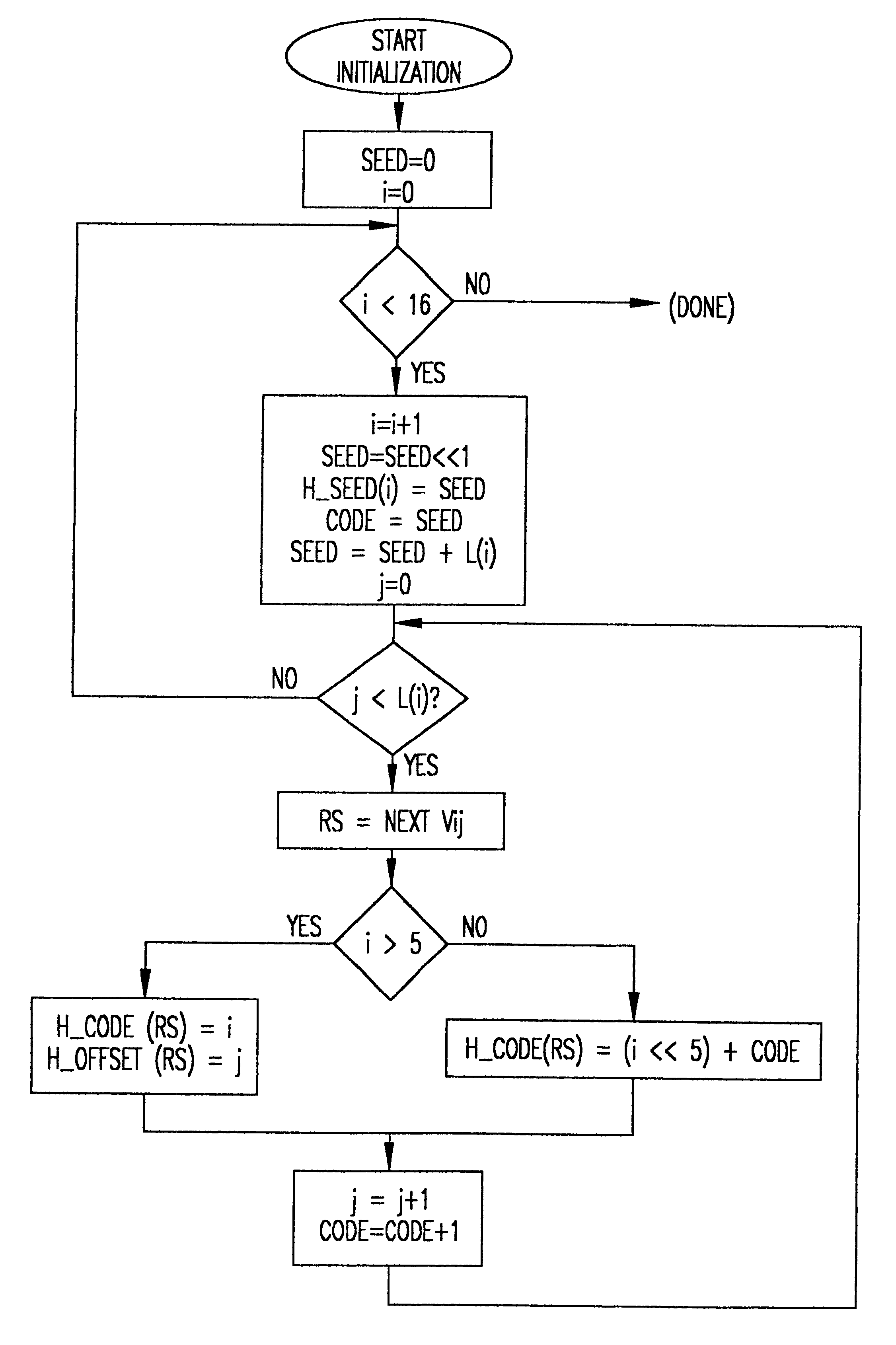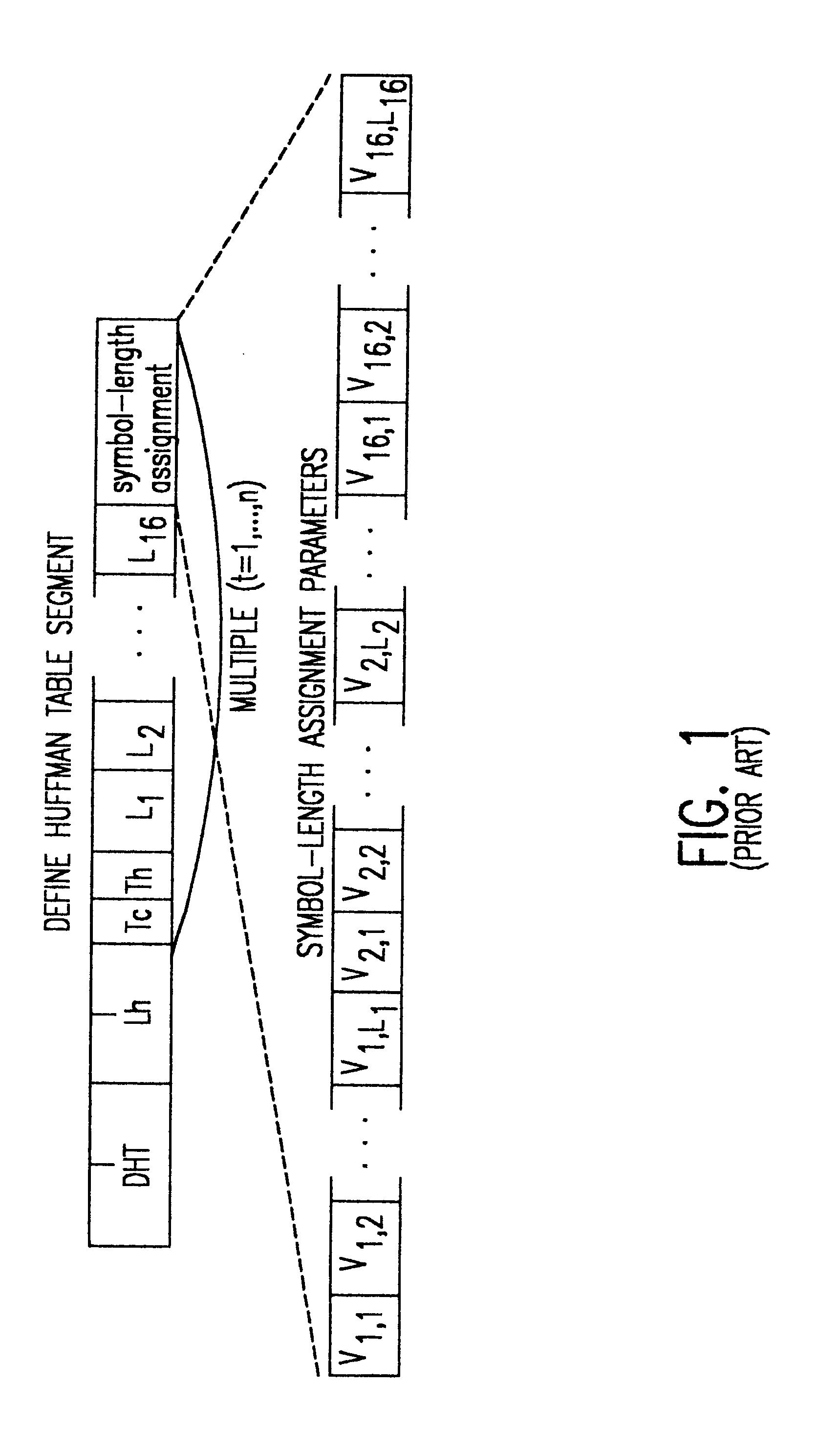Fast JPEG huffman encoding and decoding
a huffman and encoding technology, applied in the field of image compression, can solve the problems of unguaranteed actual reduction of data volume, unoptimized compression degree, expansion rather than compression,
- Summary
- Abstract
- Description
- Claims
- Application Information
AI Technical Summary
Benefits of technology
Problems solved by technology
Method used
Image
Examples
Embodiment Construction
Referring now to the drawings, and more particularly to FIG. 1, there is shown a diagram of the Huffman table specification syntax in accordance with the JPEG standard included in the above referenced Pennebaker et al publication at page 393. The illustrated syntax is referred to as a marker segment which is used to define one or more Huffman coding tables which will be thereafter used to perform Huffman entropy encoding or decoding. The same syntax is used whenever new parameters or table values are to be changed. Marker segments always contain an integral number of bytes (sometimes achieved by adding bits of a given logical value at the end of the segment) and marker segments applied to start of frame (SOF) and start of scan (SOS) blocks of code are often referred to as headers.
The marker segment in accordance with the JPEG standard, as shown in FIG. 1 always begins with a two byte code beginning with a byte-aligned hexadecimal "FF" byte followed by a non-zero byte specifying the ...
PUM
 Login to View More
Login to View More Abstract
Description
Claims
Application Information
 Login to View More
Login to View More - R&D
- Intellectual Property
- Life Sciences
- Materials
- Tech Scout
- Unparalleled Data Quality
- Higher Quality Content
- 60% Fewer Hallucinations
Browse by: Latest US Patents, China's latest patents, Technical Efficacy Thesaurus, Application Domain, Technology Topic, Popular Technical Reports.
© 2025 PatSnap. All rights reserved.Legal|Privacy policy|Modern Slavery Act Transparency Statement|Sitemap|About US| Contact US: help@patsnap.com



